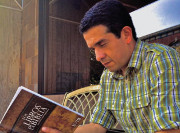USA (MNN) — Six months after Superstorm Sandy devastated the Jersey shore and New York City and pounded coastal areas of New England, recovery is still going on.
Tens of thousands of people remain displaced. Hurricane season is approaching, and housing, business, tourism, and coastal protection all remain major issues.
But cleanup is more complicated than usual. Climate Central, a non-profit research group, released a report on the six-month anniversary of the storm. According to them, the huge coastal floods sent over 10 billion gallons of raw and partly-treated sewage into waterways, streets, and homes. That's enough to cover Central Park in a 41-foot-high pile of sludge, the report notes.
The mess adds to the recovery delay. ReachGlobal Crisis Response Director Mark Lewis explains, "They're waiting on a number of different issues: flood maps need to get redone, building permit processes, decisions individual families have to make if they even want to return."
However, ReachGlobal Crisis Response has been active in the area since the disaster struck. "Our main efforts are focused in two locations: alongside Salem Church in Staten Island, and alongside Beach Church in Galloway, New Jersey. We have transitioned from the initial stage of clean up into more of the longer-term recovery and rebuilding, trying to get people back into their homes."
Lewis says some families fell through the cracks and are sort of "stuck" in the waiting process. It's the unknown that takes a toll on the storm's survivors. Their response is two-fold: First, "Trying to help families that have made decisions that have been able to assemble resources, to some degree, to get moving on the process of getting back in their homes." Second, "spiritual/emotional care for those families, as well as for the ones that are in that ‘stuck' and ‘waiting' mode."
Lewis goes on to say that Beacon EFC in Galloway, NJ, has organized an extraordinary response to their community in coordination with ReachGlobal crisis response. They are using volunteers every week going forward for this ongoing need. In New York, the teams are focused on relationship building as well as home rebuilding after Hurricane Sandy.
In Staten Island, reports of 7,000-10,000 dwellings were impacted. Staten Island (which has a lot of damage) has 3% evangelical Christians. That's 3% of over half a million people. We believe that a mission field is created in the wake of every crisis.
This disaster opened a mission field in the Northeast region, creating the opportunity to build relationships in the neighborhoods. Lewis says, "It really has provided an opportunity for the church to really be culturally relevant, to really be recognized in the broader community as a place of hope, as a place of light, as a place that cares, and as a result, people are coming."
Waiting in line becomes a chance to share Jesus. Sitting through traffic becomes a quiet time. Listening to homeowners share their stories becomes a chance to encourage another and learn a new culture and grow relationally. "There are a lot of people out there that are looking for light and hope, and when the church can be real and relevant, and connected in a very intentional way with the community in a time of crisis, it gets noticed," Lewis adds.
The model of growth is simplicity. Each partnering church, in its own community, is building the Church while it rebuilds homes, one family at a time. It's the Gospel, brought to life. "They've been there with prayer, they've been there supporting with the volunteer teams that we've had coming in to work on homes. They've seen several individuals within families that they are working with come to faith."
Want to help? Click here for your link to opportunity.

